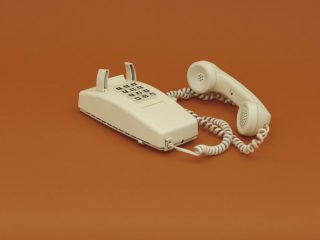I pledge allegiance to the products of the United Stated of America. And to the fashion for which it stands, one website, under shared accountability, with variety and style for all.
If you are anything like I was when I started working in the retail industry, you don’t spend much time thinking about where your clothes come from. Take a look at that label the next time you’re out shopping. Would it surprise you to learn that 98% of clothing purchased in the U.S. is imported?
Retailers are required to disclose whether a product is Made in the USA, imported or both, and yet this information is often not readily available online or is very hard to find. I created USINMADE, a curated assortment of the best items Made in the USA, because of my frustration at how difficult it was to shop by this very important criteria.
Through developing USINMADE, my conviction that what you buy and where it comes from matters has only grown. When you buy American made products, you recycle dollars back into the American economy and keep important jobs here at home. I have only relatively recently come to realize the full impact manufacturing practices have on our workforce, environment and economy at large — despite a lengthy tenure in the industry.
Manufacturing supports an estimated 12 million jobs in the US and is seen as the most critical component of our economy. Not to mention that products Made in the USA are manufactured under U.S. labor and environmental laws, which are the strictest in the world. These regulations do not exist in most of the top countries importing their goods into the U.S., which causes massive pollution and both environmental and human abuse. In fact, the seed of the idea for USINMADE was planted in 2013, following the devastating Rana Plaza factory collapse in Bangladesh that killed over 1,000 factory workers. There are real people and stories behind our clothing and it’s important to acknowledge and honor the source.
There are real people and stories behind our clothing and it’s important to acknowledge and honor the source.
My mission in creating USINMADE is to help make Made in the USA a fully marketed and coveted phenomenon. I hope to create an experience for shoppers that makes them feel good about what they are buying because they know where the product comes from and how each purchase makes a difference. The mindful fashionista no longer has to dig through small-print, care label descriptions or spend hours searching online just to find out where their clothing was made. USINMADE is a one-stop, online destination and portal for the consumer who is both conscious and style-savvy.
I have done an enormous amount of research to get the best items from the best brands, and the website offers a wide range of clothing and accessories for women and men. Some of my favorite brands include James Perse, Splendid, Current/Elliott, Rag & Bone, Beyond Yoga, Solow, Clare Vivier, Alexis Bittar, New Balance and Frye in partnership with some of my favorite retailers like ShopBop, Anthropologie and Zappos. I’m here to celebrate big brands helping the cause, as well as spotlight small businesses. In addition to the collection, the website features interesting facts and stats on the Made in USA movement in order to educate and inspire, such as that “Almost 80% of American consumers say they would rather buy an American-made product than an imported one,” and “If we spent just 5% more on Made in USA products, we could create 1,000,000 jobs!” It certainly gives a little more meaning to that jumpsuit you’ve been wanting to buy.
The mindful fashionista no longer has to dig through small-print, care label descriptions or spend hours searching online just to find out where their clothing was made.
I’m converting my closet a little more each day and am loving the process! Patriotic spending is something to feel good, about so join the movement in positive, conscious consumerism.
What are some of your favorite Made in the USA brands?
Image via Pixabay











6 comments
This came in very timely! Thank you! Even though I am not from the US, I am all about supporting local products. This is especially so after I almost bought a supposedly designer handbag but only to realize it was imported from China. I wasnt about to spend that much on a designer’s product only to have the product coming from another country, you know what I mean? Especially when majority of items are mass produced there and where labourers are underwaged.
Such a great idea! Definitely going to use this site. I would rather spend more money on clothing made in the US than less money on clothing made outside the US.
I really love this idea! I agree people could do a lot more to ensure our product purchases are supporting US job growth, and that they are made with positive humanitarian and environmental focuses. However, I noted that pretty much all of the clothing on the site is listed under pseudo-designer (if not designer) labels, and thus also come with designer price tags. I believe a movement like the one supported by USINMADE would have a much stronger backing if the products and brands were offered at more accessible price points. Many of the would-be excited supporters are of the younger generations, as studies show that people in their late teens to mid-30’s care a great deal about sustainability and humanitarian efforts within manufacturing, and are looking for opportunities to get behind leaders who can make some headway in this area. I love that some people are taking the initiative to bring more awareness and try to make those opportunities available; although, these movements fail to meet their potentials when they are not in “wallets-reach” of the majority of people who share the same values. I hope that USINMADE and other like-minded businesses and business leaders take this into consideration in the future and decide to include some more affordable options.
Dear Sara. I hear you!!! I want nothing more than for this movement to be accessible to all, so please know that I am striving to source more products within ‘wallets reach’. That being said, it has been a challenge to find lower price point merchandise. Products made by fair and honorable domestic labor simply cost more. It is complicated by the fact that there are some cheap fast fashion companies doing small production runs domestically, but by no means enough to outweigh the amount of manufacturing they do abroad. To help make it affordable, I have cut my frequency of shopping and choose quality over quantity. Although the extra cost may seem prohibitive, I know the product will hold up over many wears and have a long life, so I will have to buy less over time. This cannot be said for fast fashion. I do call on our ambassadors to notify us of brands that align with our same mission and goals, as we would love to feature them on the website! My ultimate hope is that if I can’t find these items, maybe I will be able to create them ;-).
First of all, Anne, I love this idea and am excited you’re bringing not only awareness but also a possible solution to this issue. Quick question though, how are you ensuring these items are truly made within the fifty states and not in an extended US territory like Guam? Is there even a way of being able to tell?
Hi Carolina. Thank you for your note… The law requires a product advertised as Made in USA to be “all or virtually all” made in the U.S., which admittedly is a vague standard. The Federal Trade Commission is tasked with preventing deception in the marketplace, and thus is ultimately responsible for ensuring items meet this requirement. The truth is there is a lot we don’t know, so we must hold the government accountable, and ensure they enforce the labor and environmental laws in our 50 states as well as our extended territories. In the meantime, I do what I can – just today I found myself on a call with a customer service representative, encouraging them to connect with a particular manufacturer who had mislabeled an item featured on its website. My hope is that bringing awareness to the issue will help to enact change, and bring about compliance and greater transparency.